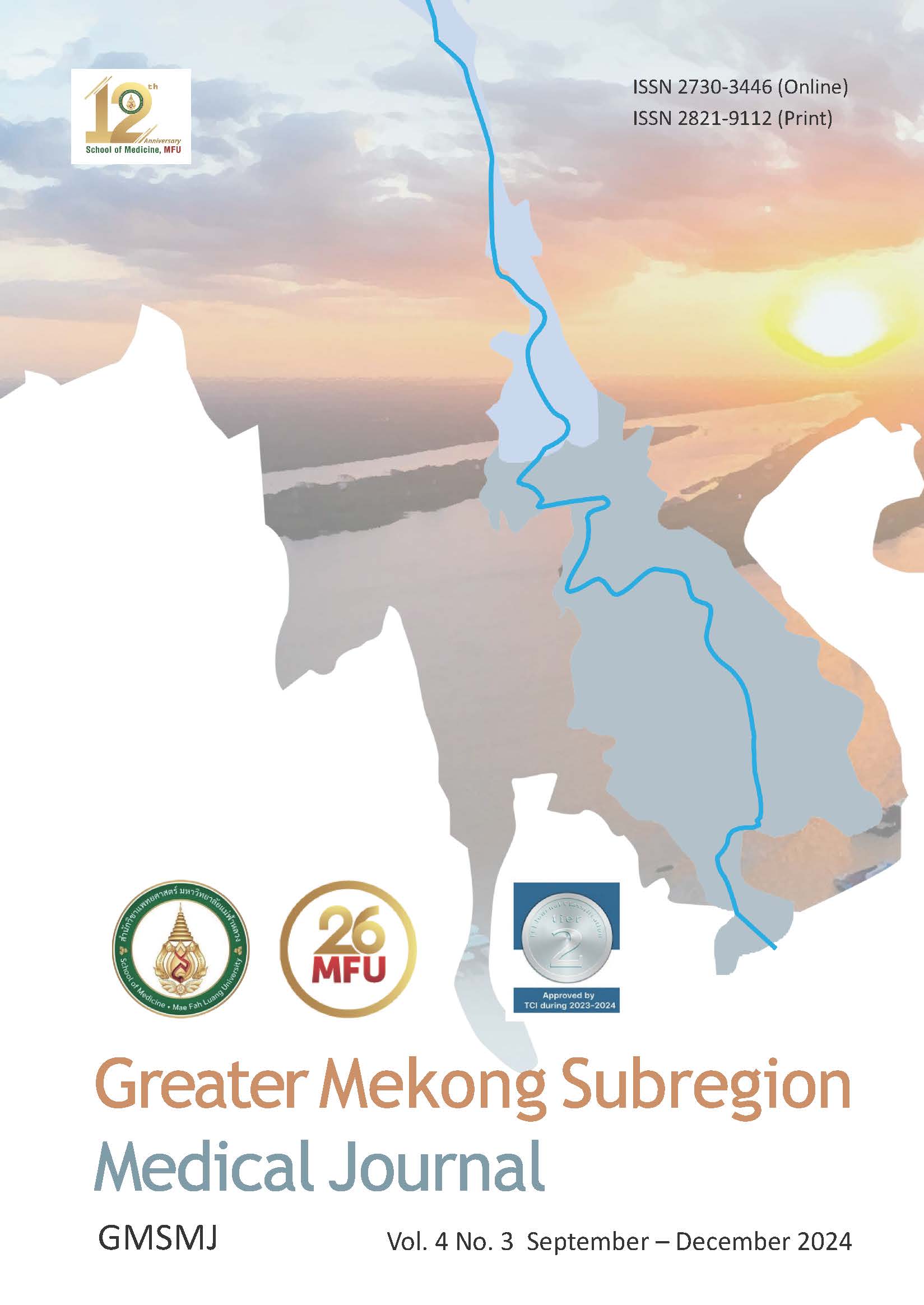A Comparative Study of Efficacy of Calamine Lotion versus Topical Corticosteroid in Intertrigo Treatment
Keywords:
Calamine lotion, Intertrigo, Topical corticosteroidAbstract
Background: Intertrigo is an inflammatory dermatitis caused by moisture, friction, and lack of ventilation. Topical corticosteroid has been used for intertrigo treatment with concerning of infection and side effects.
Objective: The objective of this study was to compare the efficacy between calamine lotion and topical corticosteroid by clinical and instrumental evaluation for the treatment of intertrigo.
Materials and Method: In this randomized split-side open-label prospective trial, thirty-three patients with intertrigo enrolled at the Dermatology Clinic of Phramongkutklao Hospital, were randomly assigned to apply two types of topical treatments twice daily for 15 days on separated side (left and right) of the body. The degree of erythema was evaluated by instrumental and clinical using mexameter (erythema index) and visual analogue scale (VAS) at baseline and at 15 days. Subject-completed visual analogue scale was carried out by patients to evaluate the pruritus.
Results: All 33 patients showed significant improvement of erythema along with pruritus intensity from baseline for both groups (p < 0.001). However, there was no significant difference in the erythema index, erythema intensity and pruritus degree between topical corticosteroid and calamine lotion (p > 0.05). Mild skin irritation was described in only 1 case (3%) on the calamine lotion side.
Conclusion: Our results suggest that calamine lotion can be as effective as conventional topical corticosteroid in the treatment of intertrigo, so it would be considered an alternative option to avoid corticosteroid used.
References
Mistiaen P, van Halm-Walters M. Prevention and treatment of intertrigo in large skin folds of adults: a systematic review. BMC Nursing. 2010; 9:12. https://doi.org/10.1186/1472-6955-9-12
Gabriel S, Hahnel E, Blume-Peytavi U, Kottner J. Prevalence and associated factors of intertrigo in aged nursing home residents: a multi-center crosssectional prevalence study. BMC Geriatrics. 2019; 19: 105. https://doi.org/10.1186/s12877-019-1100-8
Kalra MG, Higgins KE, Kinney BS. Intertrigo and secondary skin infections. Am Fam Physician. 2014; 89 (7): 569-73.
Ndiaye M, Taleb M, Diatta BA, Diop A, Diallo M, Diadie S, et al. Les étiologies des intertrigos chez l'adulte : étude prospective de 103 cas. J Mycol Med. 2017; 27 (1): 28-32. https://doi.org/10.1016/j.mycmed.2016.06.001
Verzì AE, Nasca MR, Dall'Oglio F, Cosentino C, Micali G. A novel treatment of intertrigo in athletes and overweight subjects. J Cosmet Dermatol. 2021; 20 (Suppl 1): 23-7. https://doi.org/10.1111/jocd.14097
PubChem. Calamine. Nih.gov. Available from: https://pubchem.ncbi.nlm.nih.gov/compound/Calamine
Joy N. Calamine lotion. J Skin Sex Transm Dis. 2022; 4: 83-6.
Gupta M, Mahajan VK, Mehta KS, Chauhan PS. Zinc therapy in dermatology: a review. Dermatol Res Pract. 2014; 2014: 709152.
Pati R, Mehta RK, Mohanty S, Padhi A, Sengupta M, Vaseeharan B, et al. Topical application of zinc oxide nanoparticles reduces bacterial skin infection in mice and exhibits antibacterial activity by inducing oxidative stress response and cell memb r ane dis in teg r ation in macrophages. Nanomedicine. 2014; 10 (6): 1195-208. https://doi.org/10.1016/j.nano.2014.02.012
Abdlaty R, Hayward J, Farrell T, Fang Q. Skin erythema and pigmentation: a review of optical assessment techniques. Photodiagnosis Photodyn Ther. 2021; 33:102127. https://doi.org/10.1016/j.pdpdt.2020.102127
Nijhuis WA, Houwing RH, Van der Zwet WC, Jansman FGA. A randomised trial of honey barrier cream versus zinc oxide ointment. Br J Nurs. 2012; 21 (20): 9-10, 12-3. https://doi.org/10.12968/bjon.2012.21.Sup20.S10
Downloads
Published
How to Cite
Issue
Section
License
Copyright (c) 2024 Greater Mekong Subregion Medical Journal

This work is licensed under a Creative Commons Attribution-NonCommercial-NoDerivatives 4.0 International License.






